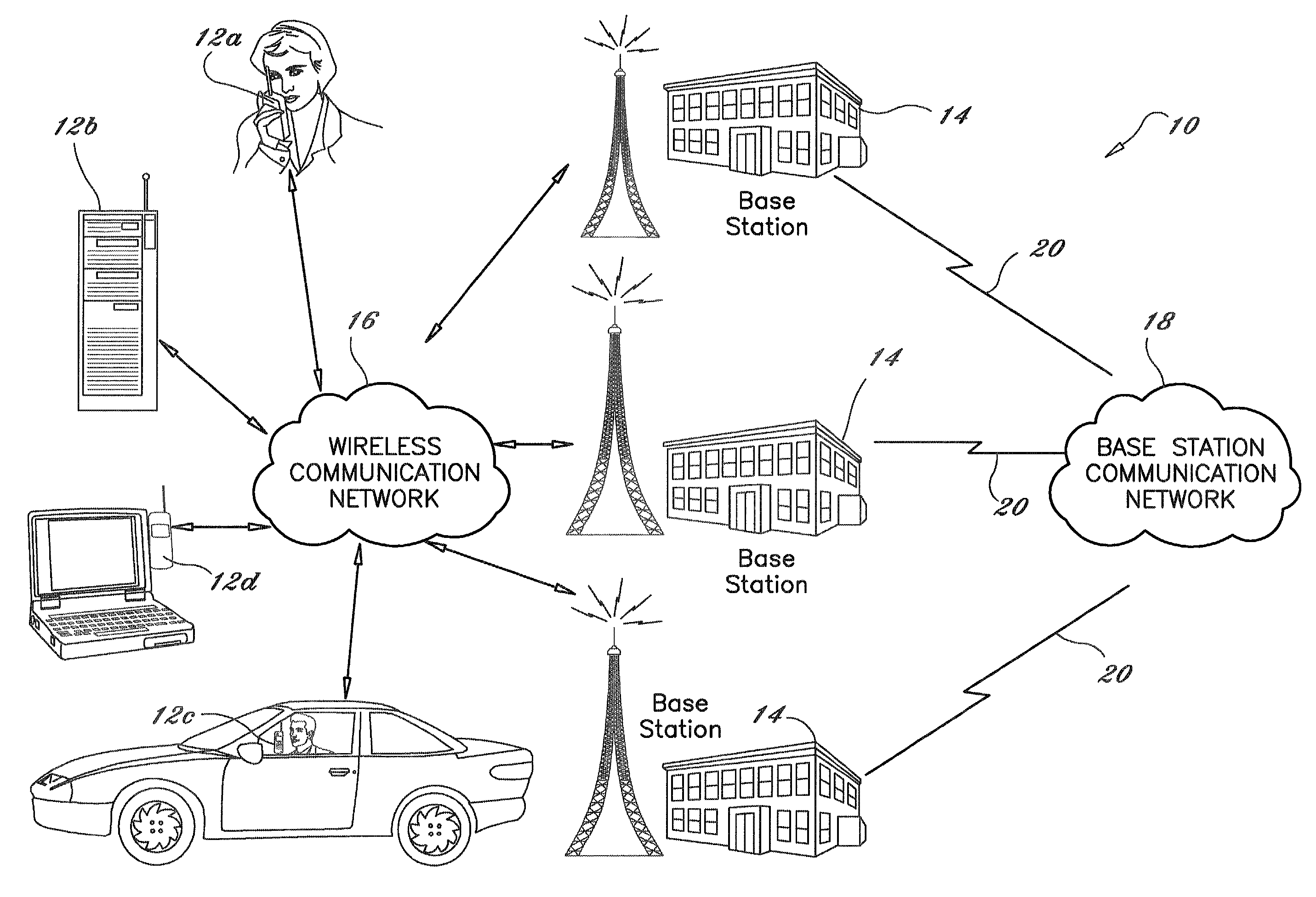System and method for time slotted code division multiple access communication in a wireless communication environment
a wireless communication and code division technology, applied in the field of wireless communication system and method, can solve the problems of loss of system orthogonality, 3gpp does not address the complementary use of scdma codes and acdma codes on the reverse link, etc., and achieve the effect of expanding the number of orthogonal codes availabl
- Summary
- Abstract
- Description
- Claims
- Application Information
AI Technical Summary
Benefits of technology
Problems solved by technology
Method used
Image
Examples
Embodiment Construction
[0044]Referring now to the drawing figures in which like reference designators refer to like elements, there is shown in FIG. 1 a communication system constructed in accordance with the principles of the present invention and designated generally as 10. Communication system 10 preferably includes one or more wireless devices 12 (shown as handheld wireless device 12a, wireless tower computer 12b, wireless vehicular mounted phone 12c, and wireless laptop computer 12d) in communication with one or more base stations 14 via wireless communication network 16. Devices 12 and base stations 14 are commonly referred to together herein as “units”.
[0045]Handheld wireless device 12a is an example of a mobile device, wireless tower 12b is an example of a stationary device, vehicular mounted wireless phone 12c is an example of a mobile device, and wireless laptop computer 12d is an example of a nomadic device. Of course, handheld wireless device 12a and vehicular mounted wireless phone 12c may al...
PUM
 Login to View More
Login to View More Abstract
Description
Claims
Application Information
 Login to View More
Login to View More - R&D
- Intellectual Property
- Life Sciences
- Materials
- Tech Scout
- Unparalleled Data Quality
- Higher Quality Content
- 60% Fewer Hallucinations
Browse by: Latest US Patents, China's latest patents, Technical Efficacy Thesaurus, Application Domain, Technology Topic, Popular Technical Reports.
© 2025 PatSnap. All rights reserved.Legal|Privacy policy|Modern Slavery Act Transparency Statement|Sitemap|About US| Contact US: help@patsnap.com



